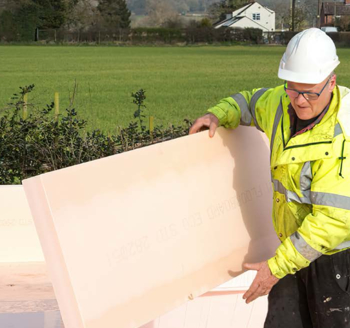AutoCAD
To help develop this article, click 'Edit this article' above.
Autodesk's AutoCAD is one of the main Computer Aided Design (CAD) software tools used for technical drawing in the construction industry. It was first released in 1982 and is used to produce drawings for design, construction, maintenance and operation as well as for future work to the structure.
The UK nbs National BIM Survey 2013 suggested that the most popular CAD software amongst respondents was:
- Autodesk AutoCAD 26%
- Autodesk AutoCAD LT 19% (a lower cost version of AutoCAD, with reduced capabilities).
- Autodesk Revit 18% (used for Building Information Modelling).
- Nemetschek Vectorworks 13%
- Graphisoft ArchiCAD 7%
- Bentley Microstation 5%
- Trimble Sketchup 2%
- Bentley Building Suite 1%
- Nemetschek Allpan 0%
- Other 8%
AutoCAD drawings are created at 'full size' and can then be scaled to suit different paper sizes or other media. It is mainly used to produce 2D drawings, although there is also a 3D feature.
AutoCAD works by using a limited number of tools to draw straight lines, circles, arc's, and so on which are saved as a series of points or coordinates. This means that the resulting drawing files are relatively small in size.
As the drawing progresses other tools can be used to make the drawing more complex and contain more information. This full size drawing is drawn in model space mode which is virtually unlimited (in reality limited by the computer hardware specification), and then scaled down in the paper [space] mode.
The native file format for AutoCAD is .dwg, but files can also be produced in an interchange file format DXF.
Autodesk have a adopted an annual release strategy now popular for many software products as it allows a revenue stream for the programmers and ensures development of the software.
In AutoCAD 2010 it adopted the new visual style developed by Microsoft to allow use by all devices such as touchscreens, mouse, pens and digitizers.
[edit] Related articles on Designing Buildings Wiki
- Building information modelling.
- Computer aided design.
- Computer aided manufacturing.
- Computers in building design.
- Connected procurement.
- Document control.
- Information and communications technology.
- Interview with Kevin Borg, founder of KJB Building Consultants.
- Government Construction Strategy.
[edit] External references
Featured articles and news
The UK's Modern Industrial Strategy: A 10 year plan
Previous consultation criticism, current key elements and general support with some persisting reservations.
Building Safety Regulator reforms
New roles, new staff and a new fast track service pave the way for a single construction regulator.
Architectural Technologist CPDs and Communications
CIAT CPD… and how you can do it!
Cooling centres and cool spaces
Managing extreme heat in cities by directing the public to places for heat stress relief and water sources.
Winter gardens: A brief history and warm variations
Extending the season with glass in different forms and terms.
Restoring Great Yarmouth's Winter Gardens
Transforming one of the least sustainable constructions imaginable.
Construction Skills Mission Board launch sector drive
Newly formed government and industry collaboration set strategy for recruiting an additional 100,000 construction workers a year.
New Architects Code comes into effect in September 2025
ARB Architects Code of Conduct and Practice available with ongoing consultation regarding guidance.
Welsh Skills Body (Medr) launches ambitious plan
The new skills body brings together funding and regulation of tertiary education and research for the devolved nation.
Paul Gandy FCIOB announced as next CIOB President
Former Tilbury Douglas CEO takes helm.
UK Infrastructure: A 10 Year Strategy. In brief with reactions
With the National Infrastructure and Service Transformation Authority (NISTA).
Ebenezer Howard: inventor of the garden city. Book review.
The Grenfell Tower fire, eight years on
A time to pause and reflect as Dubai tower block fire reported just before anniversary.
Airtightness Topic Guide BSRIA TG 27/2025
Explaining the basics of airtightness, what it is, why it's important, when it's required and how it's carried out.
Construction contract awards hit lowest point of 2025
Plummeting for second consecutive month, intensifying concerns for housing and infrastructure goals.
Understanding Mental Health in the Built Environment 2025
Examining the state of mental health in construction, shedding light on levels of stress, anxiety and depression.
The benefits of engaging with insulation manufacturers
When considering ground floor constructions.
Lighting Industry endorses Blueprint for Electrification
The Lighting Industry Association fully supports the ECA Blueprint as a timely, urgent call to action.
























Comments